Snake plants, also known as Sansevieria or Dracaena trifasciata, are among the most popular indoor plants thanks to their elegant appearance, low-maintenance nature, and air-purifying properties. But even the most resilient plant can suffer if it doesn’t get the proper care—especially when it comes to watering. In this guide, we’ll explore exactly how often you should water a snake plant to ensure it grows healthily and thrives year-round.
Understanding the Snake Plant
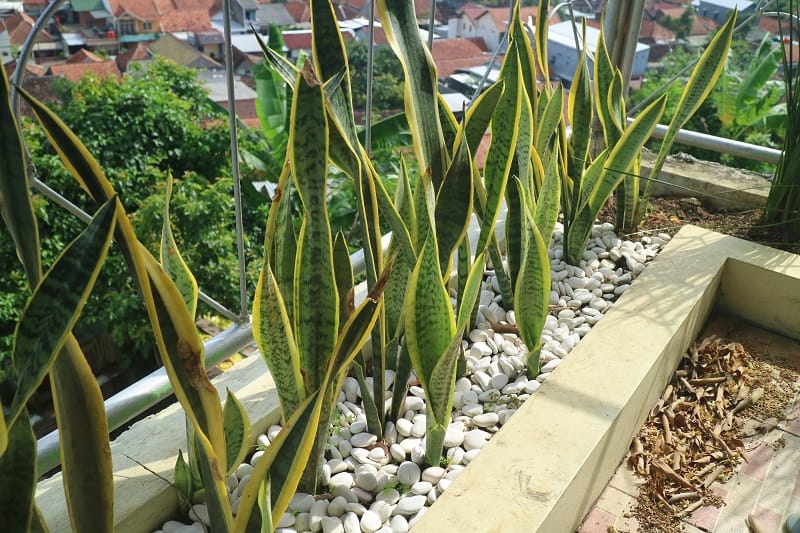
Before diving into watering schedules, it’s essential to understand the plant itself. Snake plants are succulents native to West Africa. They store water in their thick, sword-like leaves and are adapted to survive in dry, arid conditions. This drought-tolerant trait makes them perfect for busy individuals or beginners.
However, this also means they are highly susceptible to overwatering, which is the most common cause of snake plant failure.
Factors That Affect Watering Frequency

Watering frequency isn’t a one-size-fits-all routine. Several factors influence how often you should water your snake plant:
1. Season
- Spring and Summer (Growing Season): Snake plants are actively growing and require more water. You can water them every 10 to 14 days.
- Fall and Winter (Dormant Season): The plant’s growth slows down, so water only every 3 to 4 weeks or when the soil is completely dry.
2. Temperature
- Snake plants prefer a warm environment (65–85°F / 18–29°C).
- In hotter environments, water may evaporate faster, requiring slightly more frequent watering.
- In cooler or air-conditioned spaces, less watering is needed.
3. Humidity
- Snake plants thrive in moderate to low humidity.
- High humidity levels (above 60%) reduce the need for frequent watering.
4. Pot Type
- Terracotta pots absorb moisture and dry out faster, needing more frequent watering.
- Plastic or glazed ceramic pots retain moisture longer, so they require less frequent watering.
5. Soil Type
- Well-draining soil (like cactus or succulent mix) is essential. Poor drainage leads to root rot.
- Amend regular potting mix with sand or perlite for improved aeration and faster drying.
The Best Watering Method
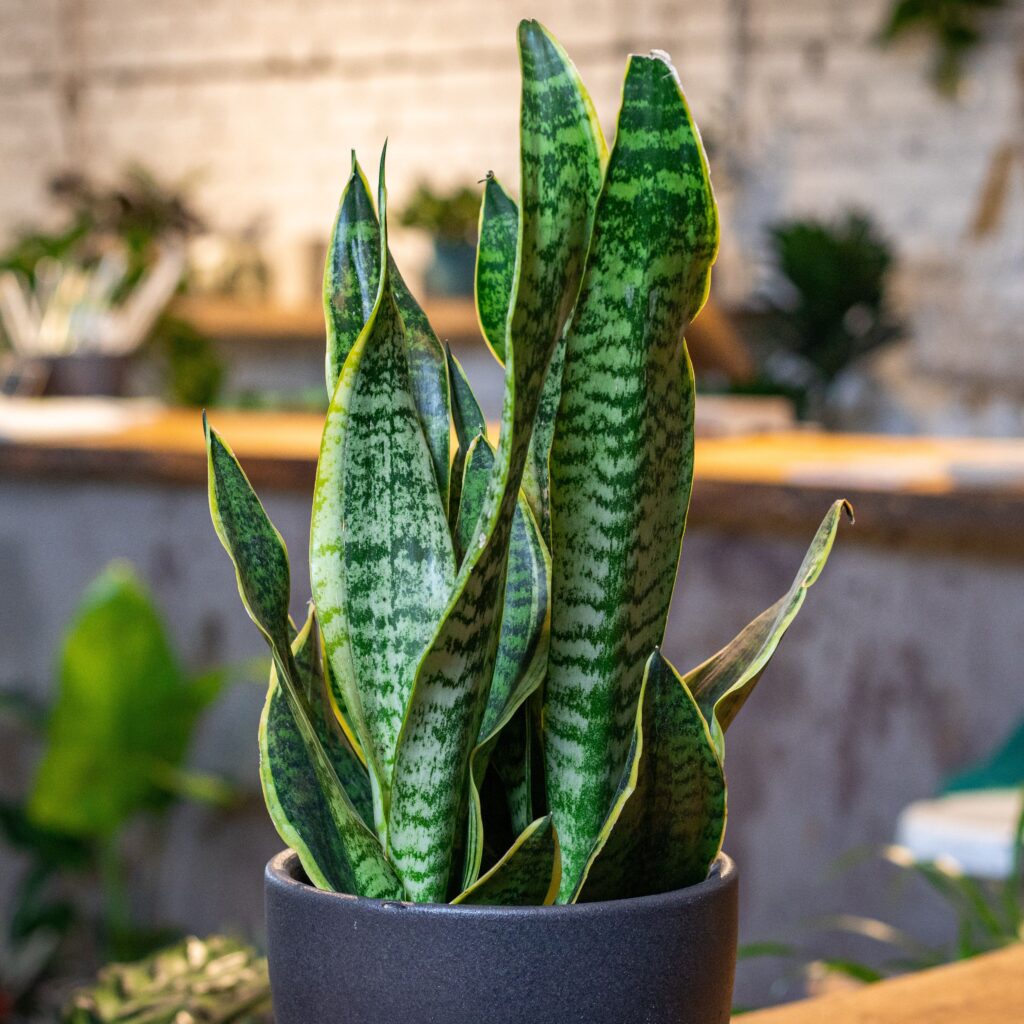
1. Check the Soil
Use the “finger test”: Stick your finger 2 inches into the soil. If it feels dry, it’s time to water. If it’s damp, wait a few more days.
Alternatively, a moisture meter can provide a more accurate reading.
2. Water Thoroughly
When watering, saturate the soil until water starts draining from the bottom of the pot. This ensures that all roots get moisture. Empty the drainage tray afterward to avoid standing water.
3. Avoid Overhead Watering
Always water directly into the soil, not onto the leaves. Wet leaves can develop fungal infections, especially in humid environments.
Signs Your Snake Plant Needs Water
- Dry, curling leaves: A classic sign of dehydration.
- Wrinkled or drooping leaves: Indicates the plant is using up its water reserves.
- Soil pulling away from pot edges: A sign that the soil is overly dry.
Signs of Overwatering
- Yellowing leaves: The most common early sign.
- Soft, mushy leaves: A result of waterlogged roots.
- Foul-smelling soil: Indicates root rot.
- Mold or fungus gnats: A sign that the soil is consistently too wet.
If your plant shows these symptoms, reduce watering immediately and consider repotting into fresh, dry soil.
Creating a Watering Schedule
Here’s a simple guide you can follow:
| Season | Watering Frequency | Notes |
|---|---|---|
| Spring | Every 10–14 days | Watch for growth spurts and adjust as needed |
| Summer | Every 7–10 days (if hot/dry) | Monitor soil closely; water may evaporate fast |
| Fall | Every 2–3 weeks | Reduce frequency as growth slows |
| Winter | Every 3–4 weeks | Ensure soil is bone dry before watering again |
Snake Plant Watering Tips for Beginners
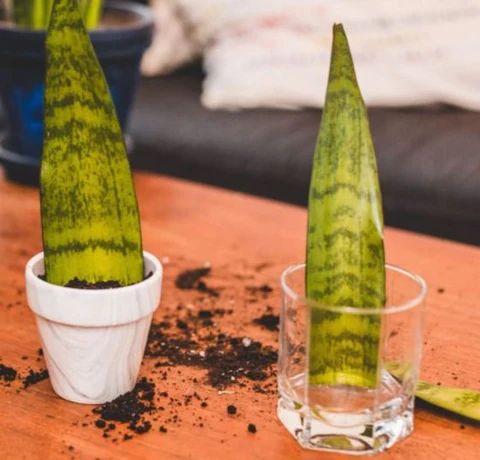
- When in doubt, wait it out. Snake plants prefer dry soil over wet.
- Use distilled or rainwater. Tap water with fluoride or chlorine can cause leaf tip burn.
- Use pots with drainage holes. Never plant snake plants in containers that trap water.
- Keep a log. If you’re a beginner, track watering days in a notebook or app until you get used to the plant’s rhythm.
Bonus: How to Revive an Overwatered Snake Plant
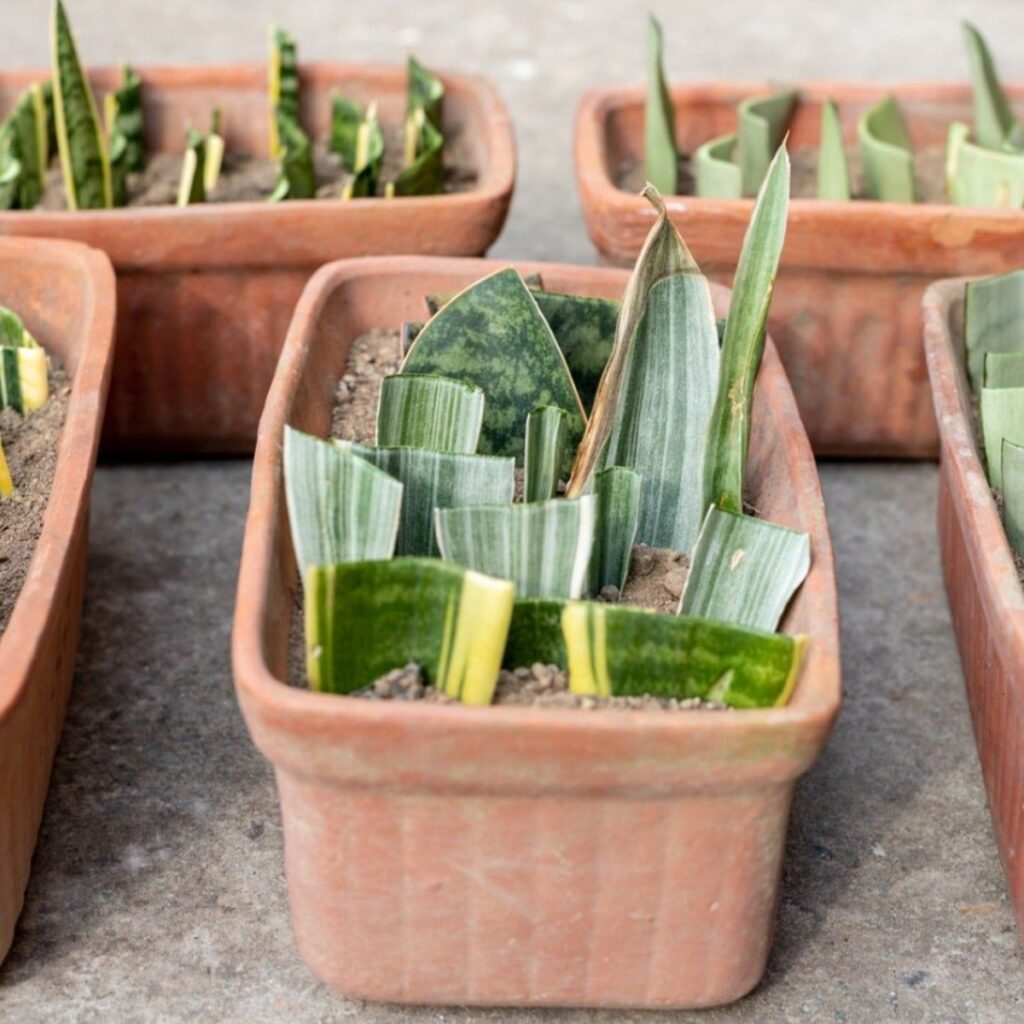
If you’ve accidentally overwatered your snake plant, here’s how to save it:
Step 1: Remove from pot
Gently pull the plant out of the pot and examine the roots.
Step 2: Trim rotted roots
Use sterilized scissors to trim off any black, mushy roots.
Step 3: Let it dry
Allow the roots and soil to dry for 1–2 days in a shaded area.
Step 4: Repot
Place the plant in fresh, dry succulent soil and a clean pot with good drainage.
Step 5: Resume cautious watering
Wait a week before watering again to allow the plant to stabilize.
Final Thoughts
Snake plants are incredibly forgiving and ideal for both beginners and seasoned plant lovers. Understanding the plant’s natural rhythm and being attentive to its needs is the key to optimal growth. The golden rule to remember is: less is more when it comes to watering snake plants.
By paying attention to environmental factors, choosing the right pot and soil, and observing your plant closely, you’ll be well on your way to growing a stunning, healthy snake plant that thrives in your home.
Did You Know?
NASA’s Clean Air Study found that snake plants help remove toxins like formaldehyde, benzene, and xylene from indoor air, making them not just a pretty face, but a health-promoting companion as well!
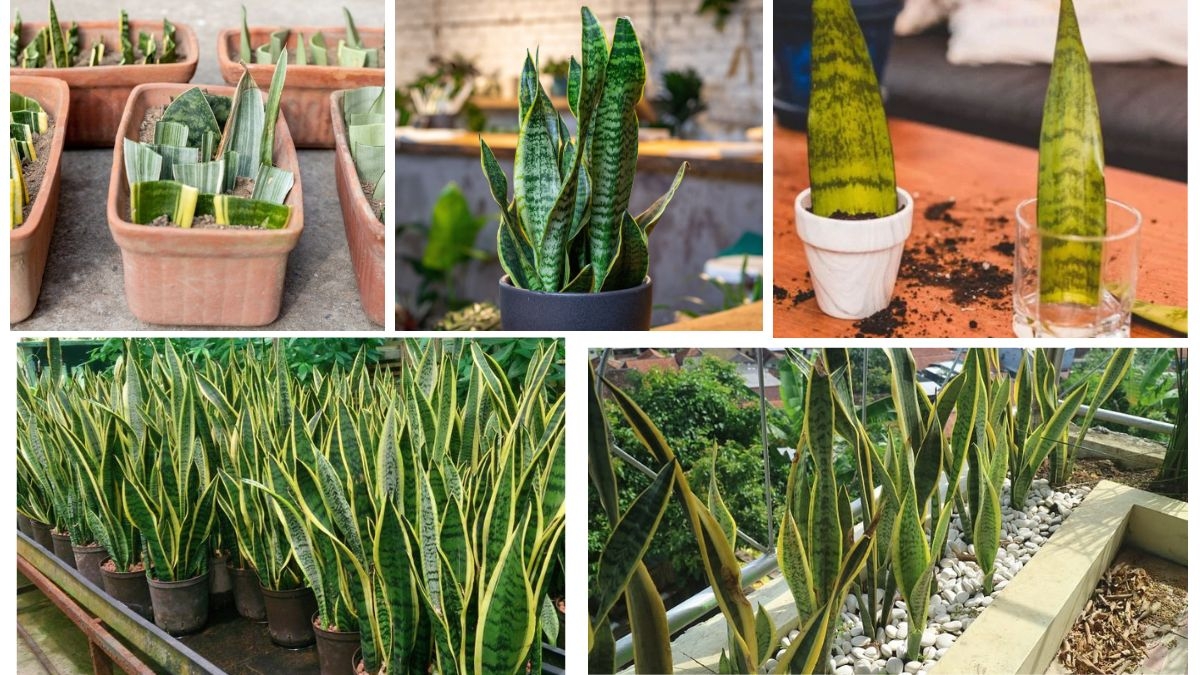



Leave A Comment